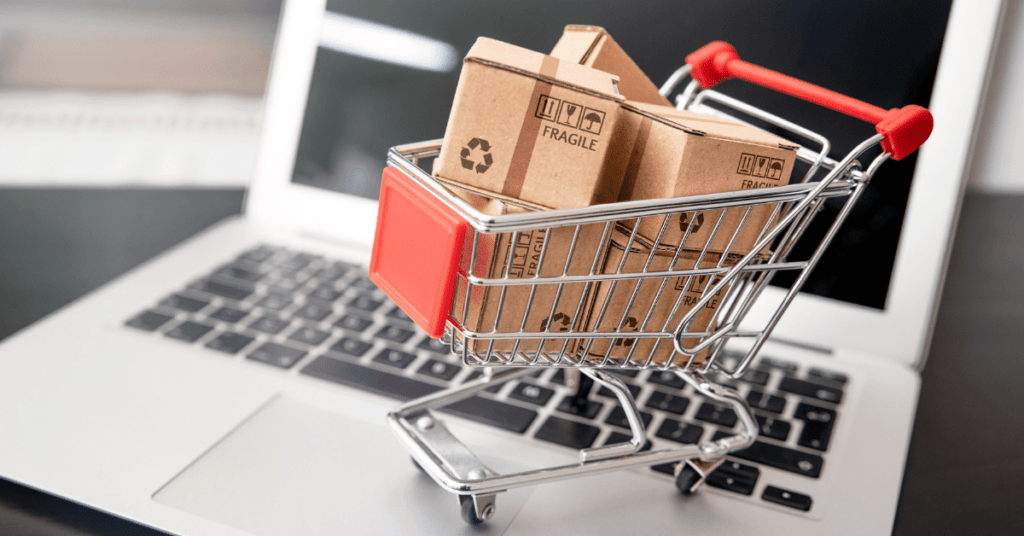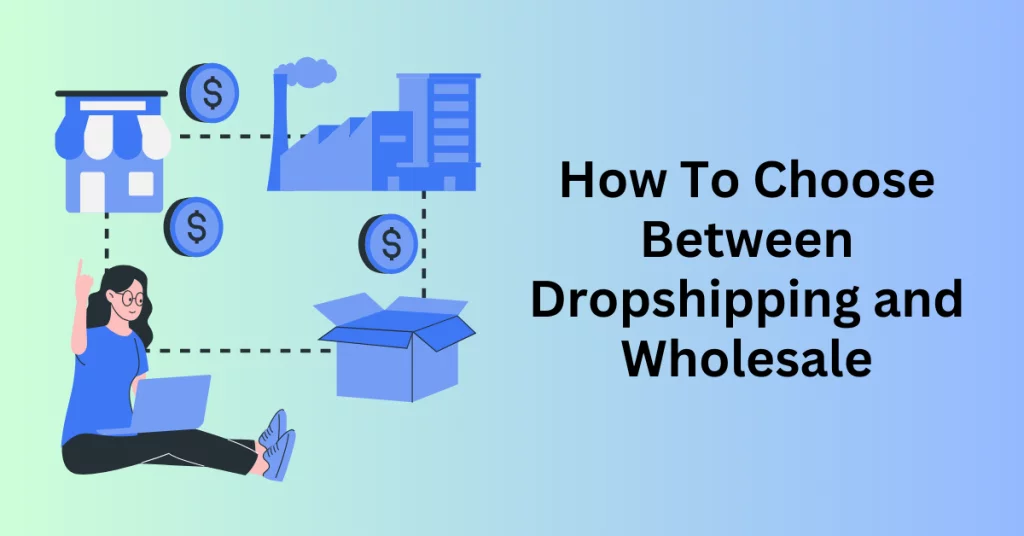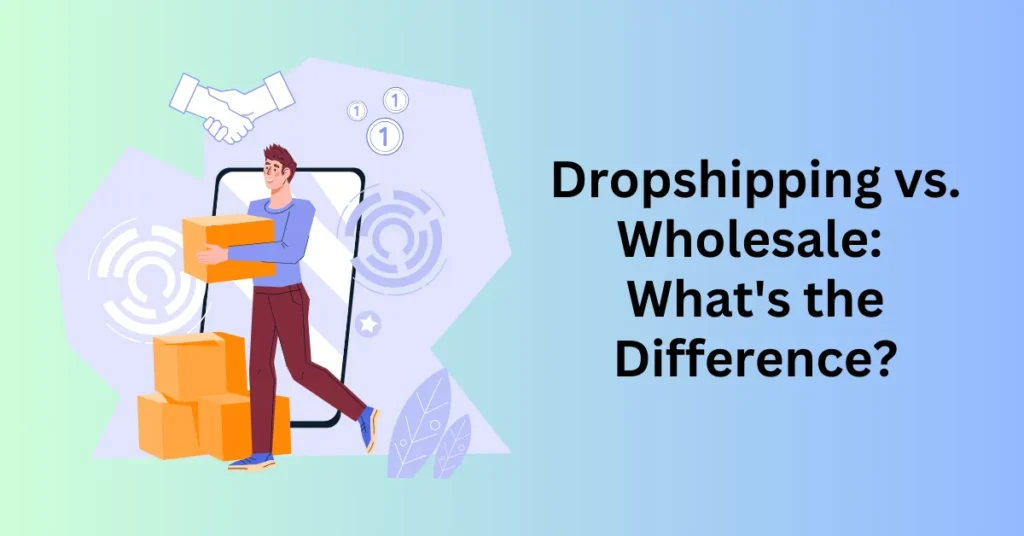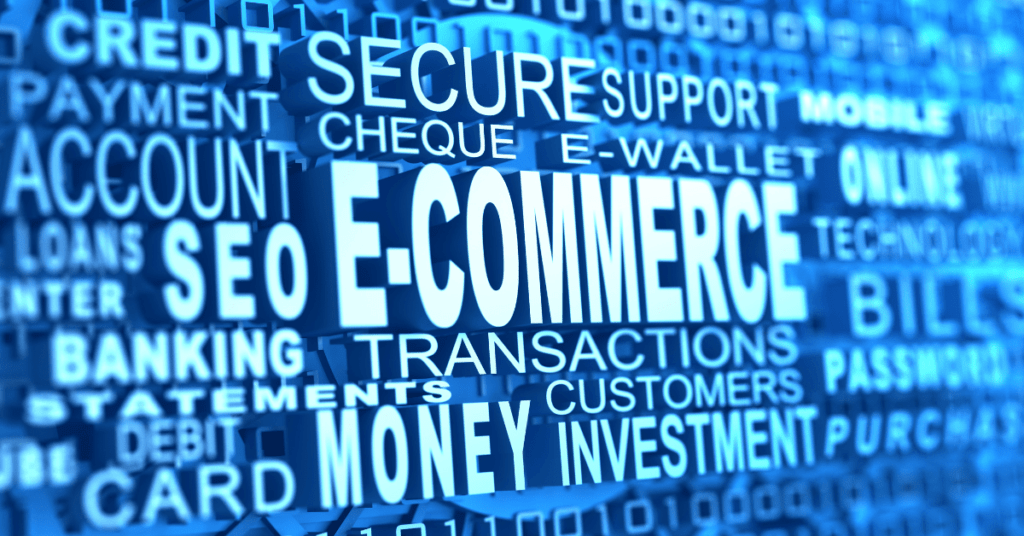Your business model serves as the blueprint for your success. It shapes how you run your operations, deliver products to customers, and achieve profitability. Among the many business models available, dropshipping and wholesale are two popular choices for online entrepreneurs. Understanding these options is crucial, as selecting the wrong model can impact your profitability, customer satisfaction, and long-term growth.
Choosing the wrong business model can be a costly mistake. Investing time, effort, and resources into a model that doesn’t align with your goals can lead to wasted investments and missed opportunities. That’s why it’s essential to thoroughly evaluate each model before making a commitment.
In this article, we will delve into the differences between dropshipping and wholesale. Our aim is to help you determine which model best aligns with your business objectives. We’ll provide a comprehensive breakdown of the pros and cons of each approach, offer practical examples, and give you insights to guide your decision-making process.
By exploring these two business models in detail, you can make a more informed choice. This will help set your business up for success. Let’s start by examining the key features of dropshipping and wholesale. This way, you can choose the path that best fits your needs and aspirations.
What is Dropshipping?
Dropshipping is a popular eCommerce business model. It allows entrepreneurs to sell products without managing or holding physical inventory. This model simplifies starting an online store. There’s no need for warehousing, inventory management, or direct shipping.

Here’s a detailed breakdown of how dropshipping works:
- Set Up Your Online Store: You create an online storefront using platforms like Shopify, WooCommerce, or BigCommerce. Your store showcases various products that you choose to offer, but you don’t physically stock any of these items.
- Product Listing and Marketing: You list the products available for purchase on your website. Your primary responsibilities involve marketing these products, driving traffic to your store, and optimizing your site’s performance to attract and convert customers.
- Customer Places an Order: When a customer makes a purchase from your store, the order details are sent directly to you. At this point, you do not handle the product yourself.
- Order Fulfillment: You then forward the order details to a third-party supplier or manufacturer who holds the inventory. This supplier is responsible for packaging and shipping the product directly to the customer on your behalf.
- Financial Considerations: You pay the supplier the wholesale price for the product, and the difference between this cost and the retail price charged to the customer is your profit. This model allows you to scale your business without substantial upfront investments in inventory.
- Customer Service: Even though you are not involved in the physical handling of products, you are still responsible for customer service. This includes addressing inquiries, handling returns or exchanges, and ensuring overall customer satisfaction.
By leveraging dropshipping, you can operate an online business with lower risk and reduced overhead costs, enabling you to concentrate on growing your brand, enhancing customer experiences, and refining your marketing strategies.
Dropshipping vs. Wholesale: Pros of Dropshipping
1. Minimal Upfront Costs
One of the most significant advantages of dropshipping is its low initial investment requirement. Entrepreneurs can start a dropshipping business with relatively little financial risk compared to traditional retail models. Since you don’t need to purchase inventory upfront, you can allocate your budget to other crucial areas. This includes marketing, website development, and customer acquisition. The low barrier to entry makes dropshipping an attractive option for new business owners. It’s especially appealing to those who are cautious about committing large sums of money to inventory.
2. Wide Product Variety Without Inventory
Dropshipping enables you to offer a vast array of products without needing to manage physical inventory. Consequently, this flexibility allows you to explore and test various product categories and trends without the concern of costs and logistics associated with stocking and storing goods. Furthermore, you can easily adapt to market demands and customer preferences, which helps in building a diverse product catalogue that attracts a wide audience. As market trends evolve, you can swiftly update your offerings to remain competitive, thereby expanding your business opportunities.
3. Simplified Logistics
With dropshipping, the logistical aspects of running a business are significantly simplified. Since the supplier is responsible for warehousing, packing, and shipping products directly to customers, you can focus on other essential aspects of your business. This includes optimizing your online store, developing marketing strategies, and enhancing customer service. By outsourcing the fulfillment process, you save time and resources, enabling you to concentrate on growing your business and improving the customer experience.
Overall, dropshipping provides a flexible, low-risk way to enter the eCommerce market, offering the potential for broad product selection and streamlined operations.
Dropshipping vs. Wholesale: Cons of Dropshipping
1. Lower Profit Margins
One of the main drawbacks of dropshipping is the typically lower profit margins compared to other business models like wholesale. Since you purchase products on a per-item basis from suppliers, the cost per unit is often higher than when buying in bulk. This means that while dropshipping can be profitable, the margins may be narrower, especially if you’re competing in a crowded market. To attract customers, dropshipping businesses often engage in price competition, which can further squeeze profit margins.
2. Limited Control Over Product Quality
In the dropshipping model, your ability to ensure product quality is limited because you rely heavily on the supplier. If a supplier delivers a faulty or subpar product, or if there are shipping delays, it can negatively impact your brand’s reputation, even though these issues are beyond your control. Since you don’t handle the products directly, managing quality and resolving customer complaints can be challenging. This places your brand’s goodwill in the hands of your suppliers.
3. High Competition and Market Saturation
The low entry barriers in dropshipping attract many new entrepreneurs. This leads to significant competition and saturation in popular niches. With so many stores offering similar products, it becomes difficult to differentiate your store from others. Numerous dropshipping stores are vying for the same customer base, which can lead to price wars. These price wars can compress profit margins and make it even harder to stand out. To succeed, you’ll need to find unique selling propositions and develop effective marketing strategies. These will help you distinguish your brand in a crowded marketplace.
Overall, while dropshipping offers several advantages, it also comes with challenges that need to be carefully managed. Lower profit margins, limited control over product quality, and intense competition are factors that require strategic planning and robust business practices to overcome.
What is Wholesale?
Wholesale is a business model where you buy products in bulk directly from manufacturers or distributors at a discounted rate. You then sell these products to consumers at a higher retail price. Unlike dropshipping, this approach requires you to hold and manage inventory instead of relying on third-party suppliers to fulfill orders.
Key Aspects of the Wholesale Model:
- Bulk Purchasing: In wholesale, you purchase products in large quantities from manufacturers or distributors. This bulk buying often results in lower per-unit costs, allowing you to benefit from discounts and negotiate better prices.
- Inventory Management: Unlike dropshipping, wholesale requires you to manage and store your own inventory. This involves handling warehousing, inventory control, and stock management. You must ensure you have sufficient space and systems in place to track inventory levels and manage product turnover.
- Quality Control: With wholesale, you have direct oversight of the products you sell. This allows you to implement quality control measures and ensure that the goods meet your standards before they reach the customer. By managing the inventory yourself, you can inspect products and address any quality issues proactively.
- Logistics and Shipping: You are responsible for the logistics of packaging and shipping products to customers. This includes arranging for warehousing, packing products, and handling shipping logistics. Managing these aspects can be complex and requires efficient systems and processes to ensure timely and accurate deliveries.
- Upfront Costs: One of the significant drawbacks of wholesale is the higher upfront investment. Purchasing inventory in bulk requires a substantial financial commitment, which can be a barrier for new or smaller businesses. However, this investment can lead to better pricing from suppliers and increased profit margins, as you are able to buy at lower costs and sell at a higher retail price.
- Suitability for Established Businesses: Wholesale is typically better suited for established businesses with the resources to manage inventory, warehousing, and logistics. It requires a more significant initial investment and operational infrastructure, making it less ideal for those just starting out.
Dropshipping vs. Wholesale: Pros of Wholesale
Wholesale offers several significant advantages that make it a compelling choice for established businesses aiming to scale or for entrepreneurs prepared to make a more substantial upfront investment. Here are the key benefits:
1. Higher Profit Margins
One of the primary advantages of the wholesale model is the potential for significantly higher profit margins. By purchasing products in bulk at discounted rates from manufacturers or distributors, you benefit from lower per-unit costs compared to buying items individually, as is typical in dropshipping. This reduced cost per unit allows you to mark up the retail price more effectively, leading to higher profit margins on each sale. For businesses focused on maximizing profitability, wholesale can be a more lucrative option, providing a competitive edge in the market.
2. Direct Control Over Quality and Branding
In the wholesale model, you maintain complete control over the products you sell. As a result, you can select suppliers who meet your quality standards and ensure that the products align with your brand’s image. Moreover, by managing your own inventory, you have the opportunity to inspect the products before they reach your customers. This process helps minimize the risk of sending out defective or substandard items. Additionally, this control extends to packaging and branding; thus, you can design your own packaging and incorporate branding elements. Consequently, this creates a cohesive and customized customer experience, which enhances your brand’s identity and appeal.
3. Potential for Stronger Customer Relationships
Wholesale enables you to build deeper connections with your customers. Since you handle inventory and fulfillment directly, you can offer more personalized service, faster shipping times, and improved overall customer support. This direct involvement can lead to increased customer satisfaction and loyalty, fostering repeat business and long-term success. Managing your own inventory also allows you to respond more promptly to customer inquiries and address any issues quickly, further strengthening your relationship with customers.
Overall, the wholesale model offers several advantages. It provides enhanced profit margins and greater control over product quality and branding. Additionally, it offers the potential to build stronger customer relationships. These benefits make wholesale an attractive option for businesses with the resources to manage inventory. It’s a good choice for those looking to capitalize on the opportunities presented by wholesale purchasing.
Dropshipping vs. Wholesale: Cons of Wholesale
While the wholesale business model offers several significant advantages, it also presents its own set of challenges and responsibilities. Here are the primary drawbacks of wholesale:
1. Higher Initial Investment
One of the most substantial hurdles in starting a wholesale business is the need for a significant upfront investment. Purchasing products in bulk requires a larger initial capital outlay compared to models like dropshipping. This investment covers the cost of inventory, storage, and additional operational expenses such as warehousing, logistics, and insurance. For new or smaller businesses, this financial commitment can be a major barrier to entry. Consequently, wholesale is often more feasible for established companies or those with secure funding.
2. Complex Inventory Management
Inventory management is a critical and complex aspect of the wholesale model. Managing your own inventory means you need to carefully track stock levels, allocate storage space, and forecast demand to prevent both overstocking and stockouts. Effective inventory management requires sophisticated systems and careful planning, which can add to operational costs and increase your workload. Additionally, unsold inventory can tie up capital and become a liability, potentially leading to financial losses if products remain unsold for extended periods.
3. Increased Operational Responsibilities
Running a wholesale business involves a broad range of operational responsibilities that extend beyond those of a dropshipping model. Specifically, you will need to manage the entire supply chain, including sourcing and purchasing products, as well as handling storage, packaging, and shipping them to customers. This comprehensive involvement in every aspect of the business can be both time-consuming and demanding. Consequently, managing these responsibilities effectively requires robust systems and processes, which, in turn, can increase both operational costs and the complexity of running your business.
Overall, while wholesale offers advantages like higher profit margins and greater control over quality and branding, it also comes with challenges such as higher initial investment, complex inventory management, and increased operational responsibilities. These factors require careful consideration and planning to ensure the success and sustainability of a wholesale business.
Dropshipping vs. Wholesale: The Key Differences
Dropshipping and wholesale are two different methods of inventory management and order fulfillment in the eCommerce business. Here are the key differences between them:
1. Inventory Management
- Dropshipping: You don’t hold any inventory. Instead, you list products from a supplier, and when a customer makes a purchase, the supplier ships the product directly to the customer.
- Wholesale: You purchase products in bulk from a supplier at a lower price, store them in your inventory, and handle the shipping when a customer makes a purchase.
2. Upfront Costs
- Dropshipping: Requires minimal upfront investment since you only pay for products after you’ve sold them.
- Wholesale: Requires a significant upfront investment to purchase inventory in bulk, plus storage and shipping costs.
3. Profit Margins
- Dropshipping: Generally lower profit margins because you’re buying products at retail or near-retail prices.
- Wholesale: Higher profit margins since you purchase products at wholesale prices and sell them at a marked-up price.
4. Control Over Inventory
- Dropshipping: Little to no control over inventory, as you rely on the supplier’s stock levels and availability.
- Wholesale: Full control over inventory, allowing you to manage stock levels and ensure availability.
5. Order Fulfillment
- Dropshipping: The supplier handles packaging and shipping, which means you don’t need to manage logistics.
- Wholesale: You are responsible for packaging and shipping products to customers, which can be time-consuming and require logistical management.
6. Branding and Customization
- Dropshipping: Limited ability to brand or customize products since you’re selling the supplier’s products as-is.
- Wholesale: Greater ability to brand and customize products, including packaging, labels, and product modifications.
7. Risk
- Dropshipping: Lower risk because you don’t need to invest in inventory, but you might face challenges with supplier reliability and product quality.
- Wholesale: Higher risk due to the upfront investment in inventory, but you have more control over product quality and customer experience.
8. Scalability
- Dropshipping: Easily scalable since you don’t need to worry about managing inventory or shipping logistics.
- Wholesale: More challenging to scale due to the need for larger storage space and more complex logistics as sales volume increases.
9. Customer Experience
- Dropshipping: The customer experience depends on the supplier’s fulfillment process, which can vary in quality.
- Wholesale: You can ensure a consistent and high-quality customer experience by controlling the entire fulfillment process.
10. Supplier Relationships
- Dropshipping: Often involves less direct interaction with suppliers, and the relationship may be more transactional.
- Wholesale: Typically involves building stronger, long-term relationships with suppliers, which can lead to better pricing and terms.
Both models have their pros and cons, and the choice between dropshipping and wholesale depends on factors such as your budget, business goals, and desired level of control over the business.
How To Choose Between Dropshipping and Wholesale

Selecting the right business model for your online store is crucial, as it affects everything from startup costs to long-term growth strategy. To help you decide between dropshipping and wholesale, consider the following scenarios:
When to Choose Dropshipping
1. For New Entrepreneurs with Limited Capital
Dropshipping is an excellent choice for those who want to start an online business but have limited capital. This model minimizes financial risk by allowing you to operate without holding inventory. With dropshipping, you can explore various products and markets without committing large sums of money upfront. It’s an ideal way to enter eCommerce with a lower initial investment and reduced financial burden.
2. For Businesses Prioritizing Flexibility and Low Risk
Dropshipping offers unparalleled flexibility and adaptability. You can experiment with a wide range of products and quickly respond to market trends without being tied to physical inventory. The low-risk nature of dropshipping also means you avoid the complexities associated with inventory management and logistics. This flexibility is particularly beneficial for businesses that want to test different product niches and adapt their offerings based on customer demand.
3. Leveraging WooCommerce for Enhanced Flexibility
Using WooCommerce can further enhance the flexibility of the dropshipping model. WooCommerce is a customizable platform that supports various product types and business needs, making it easier to adapt your store as you scale. It also integrates well with dropshipping plugins, helping streamline your operations and manage your online store efficiently.
When to Choose Wholesale
1. For Established Businesses Ready to Invest
If you have an established customer base and sufficient capital, wholesale can be a more profitable and controlled option. By buying products in bulk at discounted rates, you can achieve higher profit margins. Additionally, wholesale is ideal for businesses aiming to scale, as it offers greater financial benefits and the opportunity to negotiate better pricing with suppliers. This model is particularly well-suited for those prepared to invest in inventory and infrastructure to support growth.
2. To Support Growth with Reliable Hosting
To effectively support the growth associated with wholesale, consider using reliable WordPress hosting from providers like Bluehost. This ensures that your eCommerce site remains robust and scalable, accommodating increased traffic and complex inventory management needs. A reliable hosting service can help you manage the demands of a growing business while maintaining a seamless online shopping experience for your customers.
3. For Brands Focusing on High Quality and Customer Experience
Wholesale is the better choice if your brand’s reputation is built on offering high-quality products and exceptional customer service. With direct control over inventory, you can ensure that products meet your quality standards before reaching your customers. This model is beneficial for brands that aim to build strong, lasting relationships with their customers by delivering consistent, premium goods.
Overall, the choice between dropshipping and wholesale depends on your business goals, available capital, and operational preferences. Dropshipping is ideal for those seeking flexibility and a lower-risk entry into eCommerce, while wholesale suits established businesses ready to invest in inventory and focus on high-quality products and customer relationships.
Final Thoughts: Dropshipping vs. Wholesale: What’s the Difference?
Choosing between dropshipping and wholesale is a crucial decision that will significantly influence the trajectory of your online business. Each model offers distinct advantages and presents its own set of challenges, making it essential to consider your options carefully.
Dropshipping is ideal if you’re looking for a low-risk entry into eCommerce, with minimal upfront investment and the flexibility to experiment with different products. On the other hand, wholesale provides the opportunity for higher profit margins, greater control over product quality, and the ability to build a strong, differentiated brand.
To make the best decision, it’s important to evaluate your current resources, long-term vision, and market goals. Are you just starting out with limited capital, or do you have the means to invest more heavily in inventory? Do you prioritize flexibility and low risk, or are you focused on quality control and maximizing profitability?
By aligning your choice with your business aspirations, you can lay the foundation for sustainable success. Whether you opt for dropshipping or wholesale, making an informed decision will help you navigate the complexities of eCommerce and achieve your business goals.


